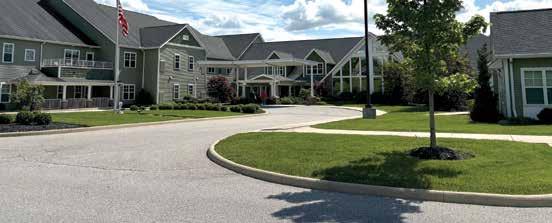
2 minute read
Why Moving to Memory Care Proactively Makes All the Difference
When it comes to memory care, timing matters more than most people realize. Many families wait until a loved one is in crisis before considering a move, but taking a proactive approach can make the transition smoother, safer, and ultimately more beneficial.
First, memory care communities are specially designed to support cognitive health in a secure and structured environment. By moving in earlier, residents have the chance to settle in, get familiar with their surroundings, and build meaningful relationships with staff and fellow residents. This can reduce confusion and anxiety, leading to better emotional and physical
well-being.
Proactive placement also opens the door to personalized care that evolves with a resident’s needs. Trained caregivers can recognize changes early and adapt support plans to better assist the resident. Residents benefit from consistent routines, stimulating activities, and a lifestyle that encourages engagement and purpose; these are some of the key components to maintaining quality of life.
Families also feel the difference. Rather than scrambling during a health emergency, they can focus on being present, sharing laughs, telling stories, and simply being family. It’s peace of mind knowing that their loved one is in a safe, compassionate place where care isn’t rushed, but thoughtfully delivered.
The truth is, waiting doesn’t make things easier; it often makes them harder. Moving to memory care proactively isn’t just about planning ahead. It’s about preserving dignity, improving daily life, and making sure your loved one receives the support they deserve.
To learn about the services available at The Village of St. Edward locations, including memory care, visit vsecommunities.org.










